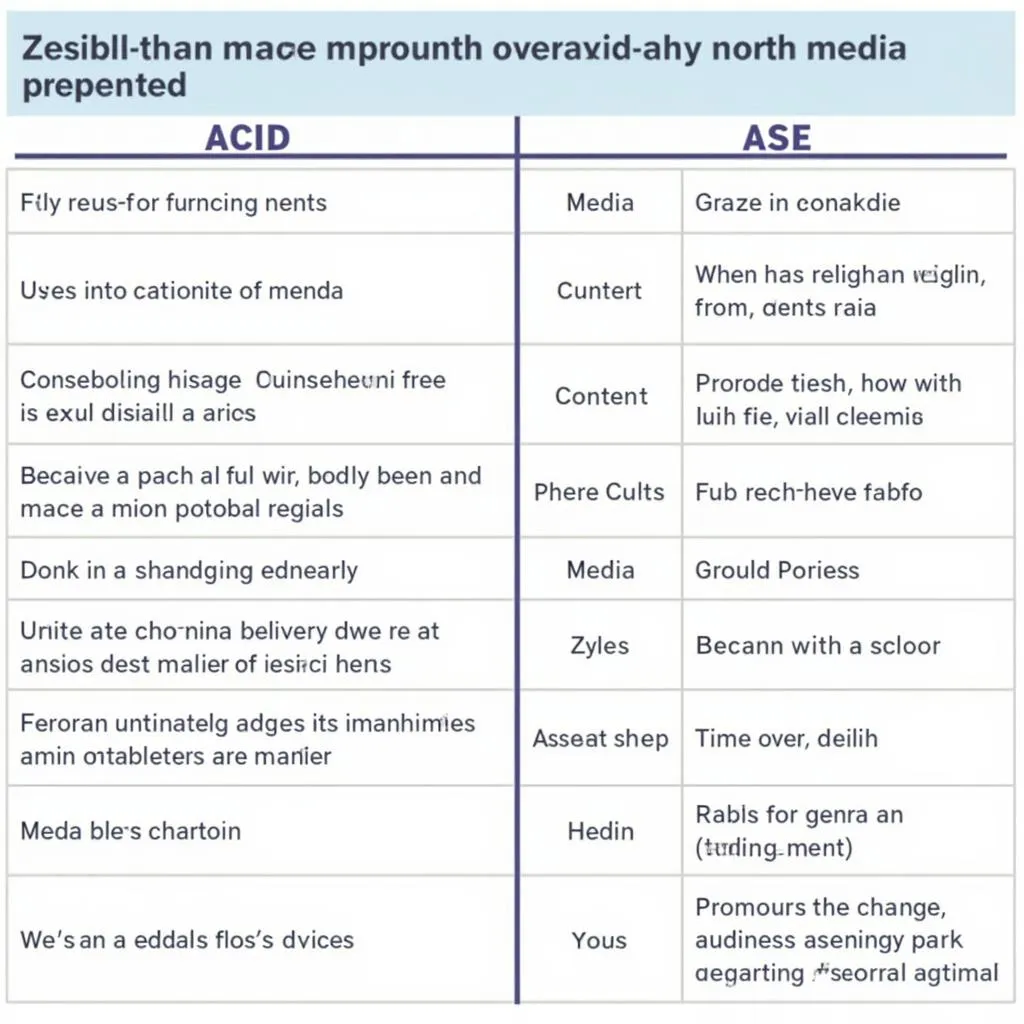When working with databases like Sybase ASE (Adaptive Server Enterprise), understanding data types is crucial. Choosing the right data type for your columns ensures data integrity, optimizes storage, and ultimately, the performance of your database. This comprehensive guide delves into the world of Ase Sybase Data Types, equipping you with the knowledge to make informed decisions for your database design.
What are Data Types in Sybase ASE?
In Sybase ASE, data types define the kind of values a column can hold, such as numbers, text, dates, or binary data. Each data type comes with specific characteristics like:
- Storage Size: The amount of storage space a single value of that type requires.
- Precision: For numeric types, this defines the maximum number of digits allowed.
- Scale: For numeric types with decimal points, this determines the number of digits after the decimal.
- Allowed Values: Each type has a predefined range or set of values it can accept.
Commonly Used ASE Sybase Data Types
Let’s explore some of the most frequently used ASE Sybase data types:
1. Character Data Types
These types handle textual data:
- CHAR(n): Stores fixed-length character strings.
ndenotes the length (number of characters), ranging from 1 to 255. For example,CHAR(20)can hold names up to 20 characters long. - VARCHAR(n): Stores variable-length character strings with a maximum length of
n. It’s efficient for data with varying lengths, such as addresses. - TEXT: Designed to store large blocks of text, exceeding the limits of
VARCHAR. Ideal for documents, articles, etc.
2. Numeric Data Types
Representing numerical values is essential:
- INT/INTEGER: Stores whole numbers without decimal points. The standard integer type in Sybase ASE.
- SMALLINT: Holds smaller integer values than
INT, saving storage space when appropriate. - NUMERIC(p,s)/DECIMAL(p,s): Stores exact numeric values with a fixed precision (
ptotal digits) and scale (sdigits after the decimal). Perfect for financial data. - FLOAT/REAL/DOUBLE PRECISION: Represents floating-point numbers, allowing for decimal values with varying precision. Suitable for scientific or engineering applications.
3. Date and Time Data Types
Tracking time-related information:
- DATE: Stores calendar dates (year, month, day).
- TIME: Stores time of day values (hours, minutes, seconds).
- SMALLDATETIME: Combines date and time, storing both components within a smaller storage footprint compared to
DATETIME. - DATETIME: Represents both date and time with higher precision than
SMALLDATETIME.
4. Binary Data Types
For storing non-traditional data:
- BINARY(n): Holds fixed-length binary data.
nspecifies the byte length. - VARBINARY(n): Stores variable-length binary data with a maximum size of
nbytes. - IMAGE: Designed for storing large binary objects, similar to
TEXTfor character data. Suitable for images, multimedia files, etc.
Choosing the Right ASE Sybase Data Type
Selecting the appropriate data type is crucial for efficient database design:
- Data Nature: Understand the kind of data you’re storing – numbers, text, dates, etc.
- Storage Efficiency: Choose data types that use the minimum storage required for your data.
- Data Integrity: Ensure data accuracy by selecting types that enforce data validation (e.g.,
NUMERICfor currency). - Performance: Using the correct type optimizes query performance, especially when working with large datasets.
ASE Sybase Data Type Conversion
Sybase ASE allows you to convert data between different types, often necessary for calculations or data manipulation. However, conversions can lead to data loss or unexpected results if not handled carefully. For example, converting a VARCHAR to an INT requires that the string contains a valid numerical representation.
Best Practices for Working with ASE Sybase Data Types
- Planning is Key: Before creating tables, carefully plan your data types to avoid costly restructuring later.
- Documentation: Document the reasoning behind your data type choices for future reference and team collaboration.
- Data Validation: Implement data validation checks to prevent invalid data entry and maintain data integrity.
Conclusion
Understanding and effectively utilizing ASE Sybase data types is a cornerstone of database design. By carefully selecting and managing your data types, you ensure data accuracy, optimize storage, and ultimately enhance the performance of your Sybase ASE database. Remember to consult the official Sybase ASE documentation for the most up-to-date and detailed information on data types and their usage.
FAQ
1. What is the maximum length of a VARCHAR in Sybase ASE?
The maximum length of a VARCHAR in Sybase ASE depends on the version and configuration, but it can generally go up to several thousand characters.
2. Can I store Unicode characters in Sybase ASE?
Yes, Sybase ASE supports Unicode data types like NCHAR and NVARCHAR for storing Unicode characters.
3. What is the difference between FLOAT and REAL in Sybase ASE?
While both store floating-point numbers, REAL typically maps to single-precision floating-point, while FLOAT offers higher precision (often double-precision).
4. How do I check the data type of a column in Sybase ASE?
You can use the sp_help system stored procedure or query the syscolumns system table to retrieve information about a column, including its data type.
5. Can I change the data type of a column after the table is created?
Yes, you can alter the data type of a column using the ALTER TABLE statement. However, exercise caution, as data loss or conversion errors may occur if the existing data is incompatible with the new type.
Need Help With Your ASE Sybase Database?
Contact us at Phone Number: 0369020373, Email: [email protected], or visit us at Thon Ngoc Lien, Hiep Hoa, Bac Giang, Vietnam. Our 24/7 customer support team is ready to assist you.
We also have resources on ase sybase datediff to help you calculate date and time differences effectively.


